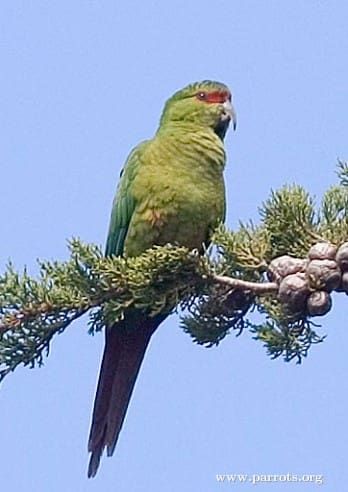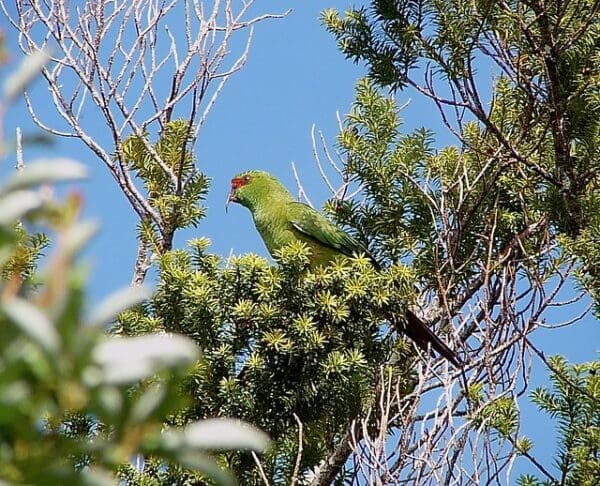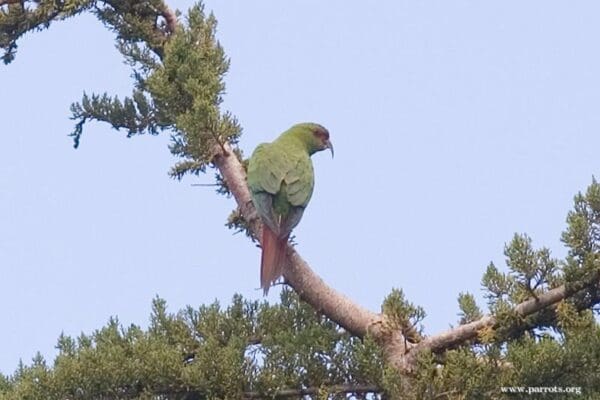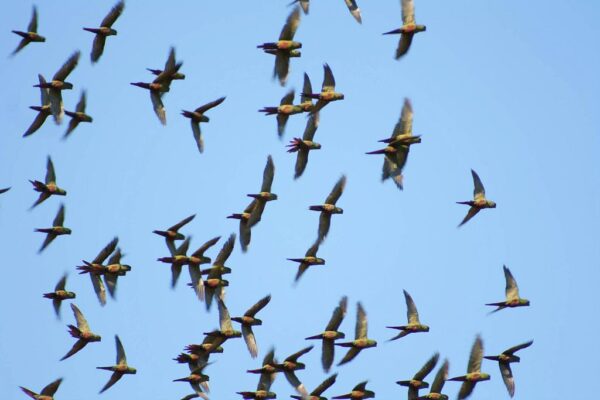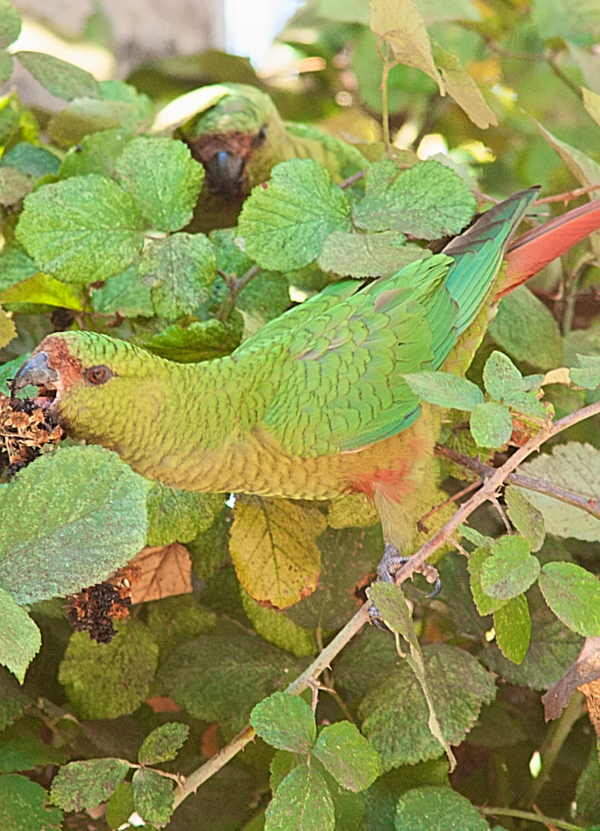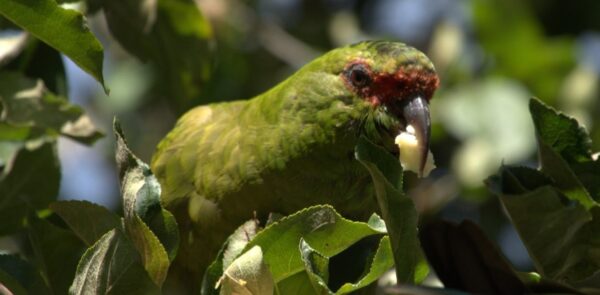Slender-billed Conure
Also known as:
Slender-billed Parakeet
Also known as:
Slender-billed Parakeet

![© PE Hart [CC BY-NC-SA] via Flickr A wild Slender-billed Conure perches in a tree](https://parrots.org/wp-content/uploads/2023/01/wpt_Slender-billed-Conure_1330-7-100x100.jpg)
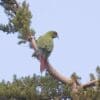
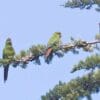
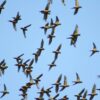
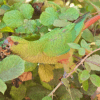
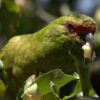
DID YOU KNOW?
The two species in the genus Enicognathus are the Slender-billed and Austral Conures. They are closely related to the Pyrrhura conures.

Enicognathus

leptorhynchus
Size:
40 cm (15.6 in)
Weight:
240 g (8.4 oz)
Subspecies including nominate:
one
Colour Adult:
Both adults in general dull green with dusky black barring; dull crimson forehead and lores, red reaching to beneath and behind eye; centre of abdomen has brown/red patch; brown/red tail. Brown/grey beak, upper mandible elongated and less curved. Eye ring pink/grey. Eye red.
Colour Juvenile:
In general darker green and less yellow; red confined to forehead and lores; upper mandible shorter and has horn coloured tip. Eye ring white.
Call:
Calls are described as incessant and screeching when in flight or disturbed; also loud, harsh notes when perched. Feeding is accompanied by shrill chattering. Contact calls heard from a distance.
More Information:
Content Sources:
CITES
BirdLife International
Cornell Lab of Ornithology/Birds of the World
Parrots: A Guide to Parrots of the World, Juniper and Parr, 1998
Parrots of the World, Forshaw and Cooper, 1977. 2010 edition
Parrots of the World, Forshaw, 2006.
Lexicon of Parrots, Thomas Arndt.
Parrots in Aviculture, Low, 1992.
Parrots: Their Care and Breeding, Low, 1986.
Captive Status:
Virtually unknown until 1976, and since then still rare.
Longevity:
—
Housing:
Aviary or suspended enclosure, minimum length 2-3 m (6.5-9.8 ft).
Diet:
Fruits such as: apple, orange, banana, pears, pomegranate, cactus fruits, forming about 30 percent of the diet; vegetables such as: carrots, celery, green beans and peas in the pod; fresh corn; green leaves such as: Swiss chard, lettuce, sowthistle, dandelion, chickweed; spray millet; small seed mix such as: canary, millet, and smaller amounts of buckwheat, oats, and a little hemp; soaked and sprouted sunflower seed; cooked beans and pulses and boiled maize; limited cubed hard cheese; complete pellet.
Enrichment:
Enjoys bathing so provide overhead misters or shallow bowls of water. Provide bird-safe, unsprayed flowering, fir, pine or willow branches, heat sterilized pine or fir cones, wooden block or vegetable tanned leather toys, ladders, swings, different sized perches and ropes.
Nest Box Size:
Diagonal nest box 10″ x 20″ x 12″ (25.4 cm x 25.4 cm x 30.5 cm).
Clutch Size:
4-6
Fledging Age:
7 weeks
Hatch Weight:
—
Peak Weight:
—
Weaning Weight:
—
World Population:
Unknown but described as locally fairly common, stable.
IUCN Red List Status:
Least Concern
CITES Listing:
Appendix II
Threat Summary:
A BirdLife “restricted-range” species. Suffered a decline in the 1950s and 1960s due to forest clearance, hunting and Newcastle disease, but is still fairly common locally. Tree cover within the range is lost at a rate equivalent to 14% over three generations (13.8 years), but this is offset by an equally high rate of tree cover gain. The species is therefore tentatively suspected to be stable.
Range:
C Chile, from Aconcagua south to Isla de Chiloé and sometimes N Aisén.
Habitat:
Found up to 2000 m (6560 ft) in forested country with Nothofagus and Araucaria trees; also found in open pasture or cultivated land.
Wild Diet:
Feeds on seeds of wild and cultivated plants, seeds of Araucaria cones, acorns, Nothofagus seeds and bulbous roots on the ground. Also grasses, thistle, buds and berries.
Ecology and Behaviour:
Gregarious, even in breeding season. Seen in flocks from a few individuals to several hundred. Roosts communally.
Clutch and Egg Size:
4-6 broadly ovate eggs, 31.5 x 25.5 mm (1.2 x 1 in).
Breeding Season:
November-February. Nest is in deep hole in tree; twigs are used to build up the floor. Occasionally rock crevices are used.
Related Links:
—
